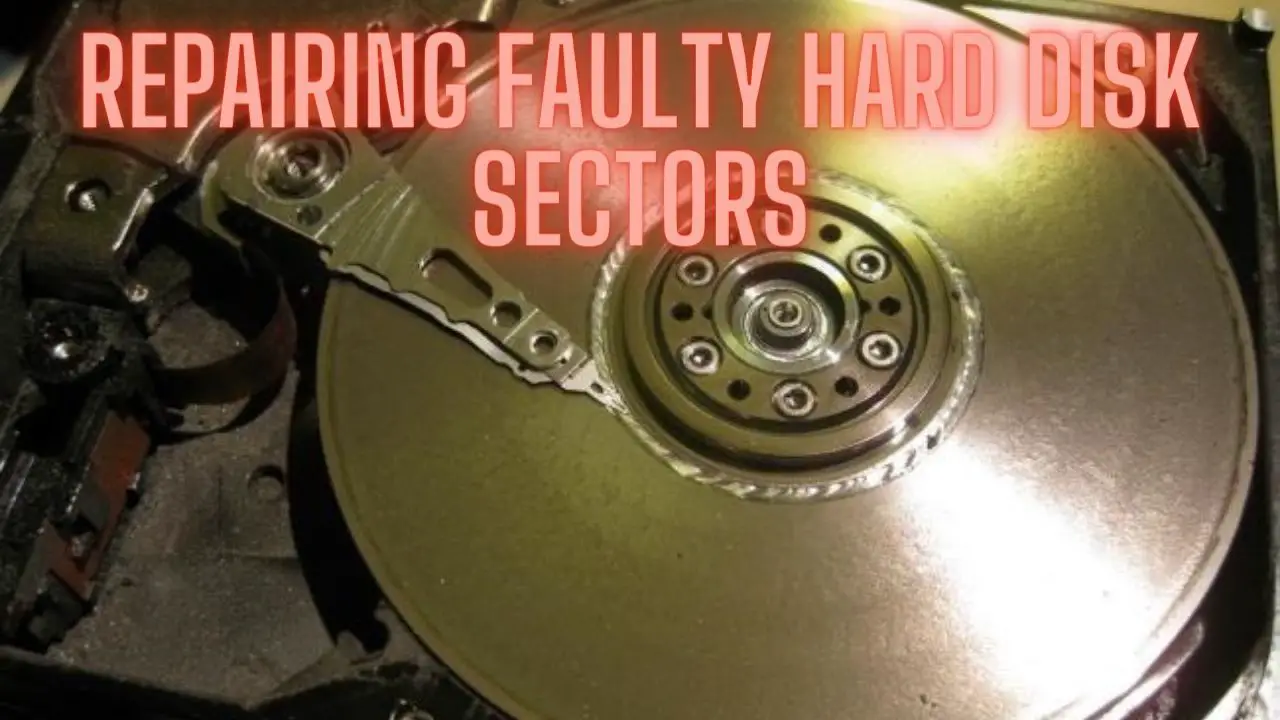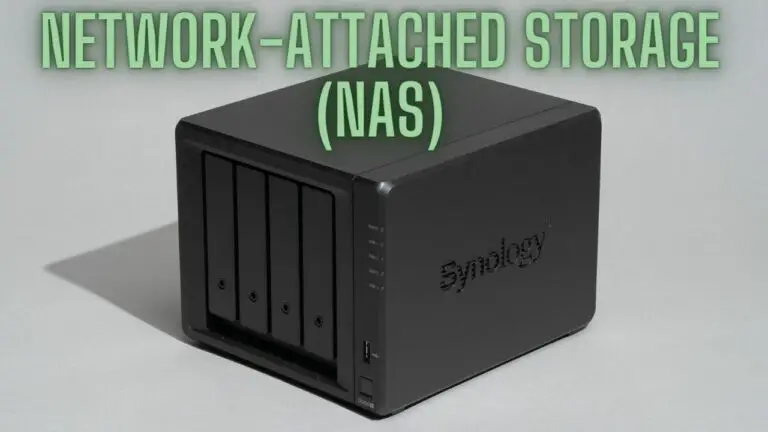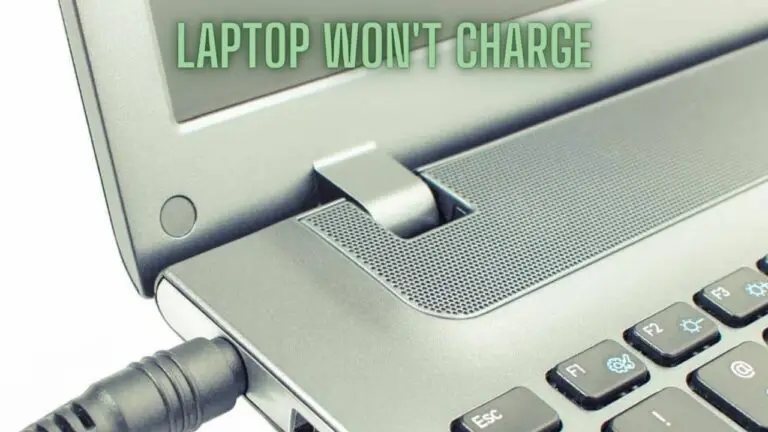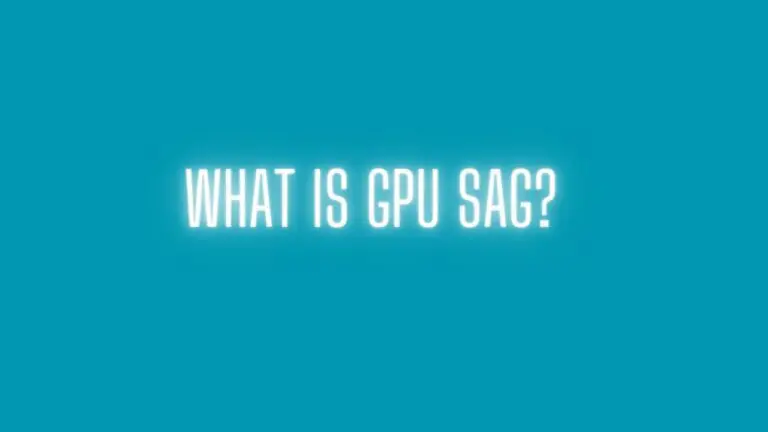Repairing Faulty Hard Disk Sectors: A Comprehensive Guide
Introduction
Hard disk drives (HDDs) are vital components of computer systems, responsible for storing and retrieving data. Over time, HDDs may develop faulty sectors, which are areas of the disk that are no longer reliably readable or writable. Faulty sectors can lead to data loss, system instability, and degraded performance. In this guide, we’ll explore the causes of faulty sectors, methods for identifying and repairing them, and best practices for maintaining the health of your hard disk drive.
Understanding Faulty Sectors
Hard disk drives are divided into small units called sectors, which are used to store data. When a sector becomes unable to reliably store or retrieve data, it is considered faulty or bad. Faulty sectors can occur due to various reasons, including physical damage to the disk surface, manufacturing defects, wear and tear over time, or software issues.
There are two main types of faulty sectors:
- Logical Bad Sectors:
- Logical bad sectors are typically caused by software-related issues rather than physical damage to the disk. These sectors may become corrupted due to improper shutdowns, file system errors, or malware infections.
- Logical bad sectors can often be repaired using disk repair tools or software utilities that scan for and repair file system errors.
- Physical Bad Sectors:
- Physical bad sectors result from physical damage to the disk surface, such as scratches, head crashes, or manufacturing defects. These sectors are unable to reliably store or retrieve data and may lead to data loss or system instability.
- Physical bad sectors are more challenging to repair and may require specialized techniques or professional assistance.
Understanding the type and cause of faulty sectors is essential for determining the appropriate repair methods and ensuring the continued reliability and performance of your hard disk drive.
Identifying Faulty Sectors
Before attempting to repair faulty sectors on a hard disk drive (HDD), it’s essential to identify and locate them accurately. Here are some methods for identifying faulty sectors:
- Disk Scanning Utilities:
- Many disk scanning utilities, such as CHKDSK (Windows), fsck (Linux), and Disk Utility (macOS), have built-in features for detecting and repairing faulty sectors.
- Running a disk scan using these utilities will generate a report indicating the presence of any bad sectors on the disk.
- S.M.A.R.T. Monitoring:
- S.M.A.R.T. (Self-Monitoring, Analysis, and Reporting Technology) is a feature built into most modern HDDs and SSDs that monitors various attributes of the drive’s health and performance.
- S.M.A.R.T. attributes such as “Uncorrectable Sector Count” or “Reallocated Sector Count” can indicate the presence of faulty sectors on the disk.
- Utilize S.M.A.R.T. monitoring tools or utilities to check the status of these attributes and identify any issues with the disk.
- Third-Party Diagnostic Tools:
- There are many third-party diagnostic tools available for identifying and analyzing disk health and performance.
- Tools like CrystalDiskInfo, HD Tune, and GSmartControl provide detailed information about the disk’s S.M.A.R.T. attributes and can help pinpoint faulty sectors.
- Disk Surface Testing:
- Some disk diagnostic tools offer surface testing or surface scanning features that perform a thorough examination of the disk surface.
- These tests write data to each sector of the disk and then read it back to identify any sectors that are unable to hold data reliably.
- Be cautious when performing surface tests, as they can stress the disk and potentially exacerbate existing issues.
- System Event Logs:
- Operating systems often log disk-related errors and warnings in system event logs.
- Reviewing these logs can provide insight into any disk-related issues, including faulty sectors.
By utilizing these methods, you can effectively identify faulty sectors on your hard disk drive and take appropriate steps to repair or mitigate their impact on data integrity and system performance.
Backing Up Data Before Repair
Before attempting to repair faulty sectors on a hard disk drive (HDD), it’s crucial to back up any important data stored on the disk. Repairing faulty sectors can be a delicate process, and there is always a risk of data loss or further damage to the disk. Here are some steps to follow when backing up your data:
- Identify Critical Data: Determine which files and folders contain critical or irreplaceable data that you want to back up. This may include documents, photos, videos, music, and any other important files.
- Choose Backup Location: Decide where you will store the backup of your data. This could be an external hard drive, a cloud storage service, a network-attached storage (NAS) device, or another computer on your network.
- Select Backup Method: Choose a backup method that suits your needs and preferences. Common backup methods include:
- Manual Backup: Manually copy files and folders from your hard drive to the backup location using File Explorer (Windows) or Finder (macOS).
- Backup Software: Use backup software such as Acronis True Image, EaseUS Todo Backup, or Macrium Reflect to automate the backup process and create regular backups of your data.
- Cloud Backup: Utilize cloud storage services like Google Drive, Dropbox, or OneDrive to store your data securely in the cloud. These services often offer automatic syncing and versioning features for added convenience.
- Schedule Regular Backups: Establish a regular backup schedule to ensure that your data is consistently backed up and protected against loss. Consider setting up automatic backups to streamline the process and minimize the risk of forgetting to back up important files.
- Verify Backup Integrity: After backing up your data, verify the integrity of the backup by checking that all files have been successfully copied and are accessible from the backup location. This helps ensure that you have a reliable backup in case of emergencies.
By backing up your data before attempting to repair faulty sectors on your hard disk drive, you can safeguard against potential data loss and ensure that your important files are protected. Remember to regularly update your backups and test their integrity to maintain a reliable backup strategy.
Built-in Disk Repair Tools
Built-in disk repair tools are often included with operating systems and can be valuable for diagnosing and repairing faulty sectors on a hard disk drive (HDD). Here are some common built-in disk repair tools for different operating systems:
Windows:
- CHKDSK (Check Disk): CHKDSK is a command-line utility in Windows that scans the file system for errors and repairs any issues it finds, including faulty sectors. To run CHKDSK, open Command Prompt as an administrator and type:
chkdsk /f /rThis command will check the disk for errors and attempt to repair them. - Windows Disk Error Checking Tool: This graphical tool can be accessed by right-clicking on the drive you want to check in File Explorer, selecting “Properties,” then navigating to the “Tools” tab and clicking on “Check” under the “Error checking” section. This tool performs a similar function to CHKDSK but in a user-friendly interface.
macOS:
- Disk Utility: Disk Utility is a built-in macOS application that allows you to manage disks and volumes, including repairing disk errors. To use Disk Utility to repair a disk, follow these steps:
- Open Disk Utility from the Utilities folder in the Applications folder or search for it using Spotlight.
- Select the disk you want to repair from the list on the left.
- Click on the “First Aid” button in the toolbar.
- Click on “Run” to start the repair process.
Linux:
- fsck (File System Consistency Check): fsck is a command-line utility in Linux used to check and repair file systems, including detecting and repairing faulty sectors on hard disks. To use fsck, open a terminal and run the command with the appropriate options for the file system type, such as ext4 or NTFS.
These built-in disk repair tools can help diagnose and repair faulty sectors on your hard disk drive. However, keep in mind that while these tools can often repair logical bad sectors caused by file system errors, they may not be able to repair physical bad sectors caused by hardware issues. In such cases, you may need to consider professional assistance or disk replacement.
Using Command-Line Tools for Repair
Using command-line tools for repairing faulty sectors on a hard disk drive (HDD) typically involves running disk repair commands within a terminal or command prompt interface. Here are some common command-line tools and procedures for repairing faulty sectors:
Windows:
- CHKDSK (Check Disk): CHKDSK is a command-line utility in Windows used to check the file system for errors and repair them, including faulty sectors. To run CHKDSK:
- Open Command Prompt as an administrator.
- Type the following command and press Enter:
chkdsk /f /r - The
/fparameter fixes errors on the disk, and the/rparameter locates bad sectors and recovers readable information.
macOS:
- fsck (File System Consistency Check): fsck is a command-line utility in macOS used to check and repair file systems, including detecting and repairing faulty sectors. To run fsck:
- Boot your Mac into single-user mode by restarting and holding down Command + S until you see a black screen with white text.
- Type the following command and press Enter:
fsck -fy - This command will run a file system consistency check and attempt to repair any issues it finds.
Linux:
- fsck (File System Consistency Check): fsck is a command-line utility in Linux used to check and repair file systems, including detecting and repairing faulty sectors. To run fsck:
- Open a terminal window.
- Type the following command and press Enter (replace
/dev/sdXwith the appropriate device identifier for your disk):sudo fsck -y /dev/sdX - This command will check and repair the file system on the specified disk, including repairing any faulty sectors.
It’s important to note that running these command-line tools for repairing faulty sectors may require administrative privileges and may prompt you to restart your computer to complete the repair process. Additionally, while these tools can often repair logical bad sectors caused by file system errors, they may not be able to repair physical bad sectors caused by hardware issues. In such cases, you may need to consider professional assistance or disk replacement. Always back up your important data before attempting any disk repair procedures.
Third-Party Disk Repair Software
Third-party disk repair software provides additional options and features for diagnosing and repairing faulty sectors on a hard disk drive (HDD). These tools often offer more advanced functionality than built-in operating system utilities. Here are some popular third-party disk repair software options:
- SpinRite: SpinRite is a well-known disk maintenance and data recovery utility developed by Gibson Research Corporation. It performs deep scans of hard drives, identifying and repairing faulty sectors, and can also help recover data from damaged sectors.
- HD Tune: HD Tune is a disk utility for Windows that includes features for benchmarking, monitoring, and diagnosing hard drives. It can scan for and repair bad sectors, as well as provide detailed information about the health and performance of the disk.
- Victoria: Victoria is a free disk utility for Windows that offers a range of advanced features for disk diagnostics and repair. It can perform surface tests to identify and repair bad sectors, as well as provide detailed SMART information and control over disk features.
- DiskWarrior: DiskWarrior is a disk repair utility for macOS developed by Alsoft. It specializes in rebuilding directory structures and repairing file system errors, which can help resolve issues related to faulty sectors and data corruption.
- Stellar Repair for Video: This software is specialized for repairing corrupt or damaged video files. It can fix issues caused by faulty disk sectors, file system errors, or other factors, allowing you to recover and restore your video files.
- EaseUS Partition Master: EaseUS Partition Master is a comprehensive disk management tool for Windows that includes features for partitioning, cloning, and disk optimization. It also provides utilities for scanning and repairing bad sectors on hard drives.
- Disk Drill: Disk Drill is a data recovery and disk management tool available for both Windows and macOS. In addition to data recovery, it includes disk health monitoring features and tools for repairing bad sectors and file system errors.
When selecting third-party disk repair software, it’s essential to choose a reputable and trusted tool from a reliable developer. Be sure to read user reviews, research the features and compatibility of the software, and consider your specific needs and requirements before making a decision. Additionally, always back up your important data before running any disk repair procedures to minimize the risk of data loss.
Manual Sector Repair Techniques
Manual sector repair techniques involve more hands-on approaches to repairing faulty sectors on a hard disk drive (HDD), typically using specialized hardware or software tools. These techniques are more advanced and may require technical expertise. Here are some manual sector repair techniques:
- Zero-Fill (Low-Level Formatting): Zero-filling, also known as low-level formatting, involves writing zeros to the entire surface of the hard disk drive. This process can help identify and isolate faulty sectors by forcing the disk controller to remap them. Many disk diagnostic and repair tools include zero-fill functionality.
- Manufacturer-Specific Utilities: Some hard drive manufacturers provide specialized diagnostic and repair utilities for their drives. These utilities may offer advanced features for identifying and repairing faulty sectors, as well as optimizing disk performance and health. Check the manufacturer’s website for utility software specific to your hard drive model.
- SpinRite: SpinRite is a popular disk maintenance and data recovery utility that includes features for repairing faulty sectors. It performs deep scans of hard drives, identifying and repairing damaged sectors by repeatedly reading and writing data to them. SpinRite can often revive hard drives with a high number of faulty sectors.
- HDD Regenerator: HDD Regenerator is a software tool designed to repair bad sectors on hard disk drives. It works by scanning the disk surface and regenerating damaged sectors by magnetizing the affected areas. HDD Regenerator can often repair physical bad sectors caused by surface damage or wear.
- Reflowing: Reflowing is a physical technique that involves heating the hard drive to a specific temperature to repair faulty sectors caused by issues such as cold solder joints or electronic component degradation. This technique is more commonly used for repairing solid-state drives (SSDs) but may also apply to HDDs in certain cases.
- Freezing Method: Some users have reported success in temporarily repairing faulty sectors by freezing the hard drive. This involves placing the hard drive in a sealed plastic bag and placing it in the freezer for a few hours. The cold temperature may cause the components to contract, temporarily restoring functionality. However, this method is not guaranteed and may cause further damage to the drive.
It’s important to note that manual sector repair techniques can be risky and may not always be successful. Before attempting any manual repair techniques, be sure to back up your important data to prevent data loss. Additionally, consider seeking professional assistance if you’re unsure about performing these techniques yourself, as improper use can lead to further damage to the hard drive.
Verifying Repaired Sectors
Verifying repaired sectors is an essential step after attempting to repair faulty sectors on a hard disk drive (HDD). It ensures that the repair process was successful and that the disk is functioning properly. Here’s how you can verify repaired sectors:
- Disk Scanning Utilities:
- Run disk scanning utilities such as CHKDSK (Windows), fsck (Linux), or Disk Utility (macOS) again to check the disk for errors after attempting repairs. These utilities will provide a report indicating whether any remaining faulty sectors were successfully repaired.
- SMART Monitoring:
- Use SMART monitoring tools or utilities to check the disk’s SMART attributes for any indications of remaining faulty sectors or other issues. Look for changes in attributes such as “Uncorrectable Sector Count” or “Reallocated Sector Count” to verify that repairs were successful.
- Surface Testing:
- Perform surface testing or surface scanning using disk diagnostic tools to verify the integrity of the disk surface. These tests write data to each sector of the disk and then read it back to ensure that all sectors are functioning correctly.
- Data Integrity Checks:
- After verifying that faulty sectors have been repaired, perform data integrity checks by accessing files and folders stored on the disk. Look for any signs of data corruption or missing files that may indicate ongoing issues with the disk.
- Regular Monitoring:
- Continue to monitor the disk’s health and performance regularly using SMART monitoring tools or disk diagnostic utilities. Keep an eye on any changes in SMART attributes or disk behavior that may indicate recurring issues with faulty sectors.
- Backup Data Again:
- Once you have verified that repaired sectors are functioning properly, it’s a good idea to back up your important data again as a precautionary measure. This ensures that you have a recent backup in case of future disk issues or data loss.
By verifying repaired sectors using these methods, you can ensure the continued reliability and performance of your hard disk drive. If you encounter any remaining issues or signs of recurring faulty sectors, consider seeking professional assistance or replacing the disk to prevent further data loss or system instability.
Precautions and Best Practices
- Backup Data: Before attempting any repairs on a hard disk drive (HDD), always back up your important data to prevent potential data loss. Repairing faulty sectors can be a delicate process, and there is always a risk of further damage to the disk.
- Identify the Cause: Determine the underlying cause of the faulty sectors before attempting repairs. Faulty sectors can be caused by physical damage, software errors, or other issues, and the appropriate repair method may vary depending on the cause.
- Use Reliable Tools: When using disk repair tools or software, ensure that you are using reputable and reliable tools from trusted developers. Avoid using unfamiliar or untested software that could potentially cause further damage to the disk.
- Follow Instructions Carefully: Read and follow the instructions provided by the disk repair tools or software carefully. Improper use of these tools can lead to data loss or damage to the disk.
- Perform Regular Backups: Establish a regular backup schedule to ensure that your important data is consistently backed up and protected against loss. Regular backups help mitigate the risk of data loss due to disk failures or other issues.
- Monitor Disk Health: Monitor the health and performance of your hard disk drive regularly using SMART monitoring tools or disk diagnostic utilities. Keep an eye on any changes in SMART attributes or disk behavior that may indicate potential issues with the disk.
- Avoid Physical Damage: Handle hard disk drives with care to avoid physical damage, which can lead to faulty sectors and other disk issues. Avoid dropping or jarring the disk, and ensure that it is stored in a safe and stable environment.
- Consider Professional Assistance: If you are unsure about repairing faulty sectors yourself or if you encounter recurring issues after attempting repairs, consider seeking professional assistance from data recovery experts or disk repair specialists.
- Replace Failed Disks: If a hard disk drive continues to experience issues despite repair attempts, consider replacing the disk with a new one to prevent further data loss or system instability. It’s better to replace a failing disk proactively than to risk losing valuable data.
By following these precautions and best practices, you can minimize the risk of data loss and ensure the continued reliability and performance of your hard disk drive. If you encounter any difficulties or uncertainties during the repair process, don’t hesitate to seek professional assistance to avoid further complications.
When to Consider Disk Replacement
Knowing when to consider disk replacement is crucial for maintaining data integrity and system reliability. Here are some indicators that suggest it may be time to replace your hard disk drive (HDD):
- Persistent Faulty Sectors: If your HDD continues to develop faulty sectors despite repair attempts, it may indicate underlying issues with the disk’s physical integrity. Persistent faulty sectors can lead to data loss and system instability, making disk replacement necessary.
- SMART Warnings: SMART (Self-Monitoring, Analysis, and Reporting Technology) is a feature built into most modern HDDs that monitors various attributes of the drive’s health and performance. If your HDD reports significant SMART warnings, such as high numbers of reallocated sectors, pending sectors, or uncorrectable errors, it’s a strong indicator that the disk is failing and should be replaced.
- Noise or Vibration: Unusual noises or vibrations coming from your HDD, such as clicking, grinding, or whirring sounds, can indicate mechanical issues within the drive. These symptoms often suggest imminent disk failure and warrant immediate replacement to prevent data loss.
- Slow Performance: A noticeable decrease in disk performance, such as prolonged read/write times, frequent freezes or crashes, and sluggish system responsiveness, may indicate disk degradation or impending failure. If disk performance issues persist after optimization efforts, consider replacing the HDD.
- Physical Damage: Visible signs of physical damage to the HDD, such as dents, scratches, or other external damage, can compromise the integrity of the disk and lead to data loss. Physical damage often necessitates immediate disk replacement to prevent further deterioration.
- End of Life: Hard disk drives have a finite lifespan, typically ranging from several years to a decade depending on usage patterns and environmental factors. If your HDD is approaching or has exceeded its expected lifespan, it’s wise to proactively replace it to avoid sudden failure and data loss.
- Critical Data Loss Risk: If your HDD contains critical or irreplaceable data, such as business documents, personal photos, or financial records, and there’s a significant risk of data loss due to disk issues, it’s advisable to replace the disk as a precautionary measure.
When considering disk replacement, it’s essential to back up your important data regularly to prevent data loss during the transition to a new disk. Additionally, consider upgrading to a solid-state drive (SSD) for improved performance and reliability, especially if your budget allows. Overall, proactive disk replacement can help safeguard your data and ensure the continued stability of your system.
FAQS
What are faulty hard disk sectors, and how do they affect my computer?
Faulty hard disk sectors are small areas on your hard drive’s storage platters where data cannot be reliably read or written. They can lead to data corruption, file system errors, and system instability. If left unaddressed, they can potentially result in data loss.
What causes faulty sectors on a hard disk?
Faulty sectors can be caused by several factors, including aging, physical damage (such as drops or shocks), manufacturing defects, sudden power losses, exposure to extreme temperatures, and malware or virus attacks.
Can faulty sectors be repaired, and how do I know if they are repairable?
Yes, faulty sectors can often be repaired, but it depends on their type. Logical sectors, caused by software or file system errors, can usually be repaired using disk checking and repair utilities like CHKDSK (Windows) or fsck (Linux/macOS). Physical sectors, caused by physical damage to the hard drive’s surface, may require professional assistance and specialized equipment for repair or data recovery.
Are there any software tools to repair faulty sectors on a hard drive?
Yes, there are third-party disk repair tools available that specialize in repairing logical disk errors. Some popular options include SpinRite, HDD Regenerator, and DiskWarrior. These tools can help repair or mark bad sectors as unusable.
What precautions should I take before attempting to repair faulty sectors?
Before attempting any repair, it’s crucial to back up your data to prevent data loss during the repair process. For physical sector repair, consult with a professional data recovery service or hard drive repair specialist.
Can I continue using a hard drive with faulty sectors?
It’s generally not recommended to continue using a hard drive with faulty sectors, especially if they are increasing in number. Faulty sectors can lead to data loss and system instability. It’s best to address the issue promptly by repairing or replacing the hard drive.
How can I prevent the development of faulty sectors on my hard drive?
While you can’t entirely prevent faulty sectors, you can take steps to minimize their occurrence. These include regular data backups, handling your computer and hard drive with care to avoid physical damage, using surge protectors or UPS devices, and performing routine disk maintenance like disk checks and defragmentation.
When should I consider replacing a hard drive with faulty sectors?
If your hard drive has a significant number of faulty sectors or they are increasing rapidly, it’s a sign that the drive may be failing. In such cases, it’s advisable to replace the hard drive to prevent data loss and system instability.
Conclusion
Faulty sectors are a common issue with hard drives and can result from various factors. Depending on whether they are logical or physical, you can attempt to repair them using software tools or professional services. However, prevention is always the best strategy, so taking steps to protect your hard drive and regularly backing up your data are essential practices to minimize the impact of faulty sectors on your data and overall system stability.







